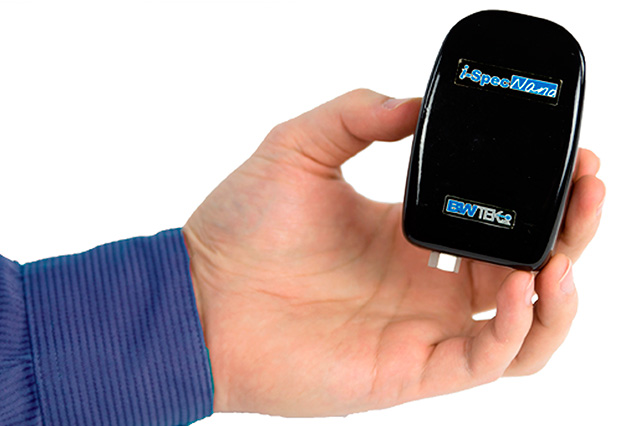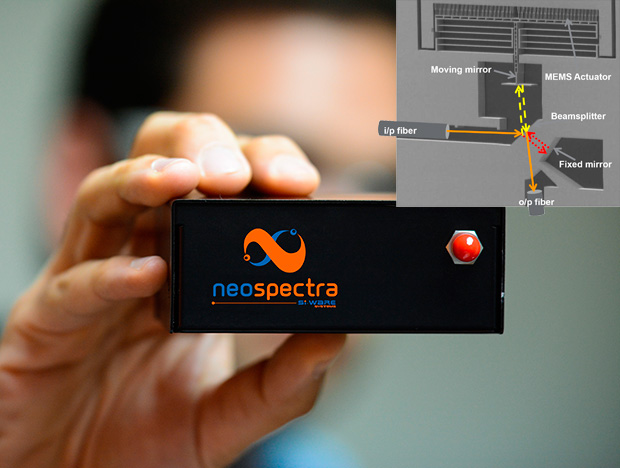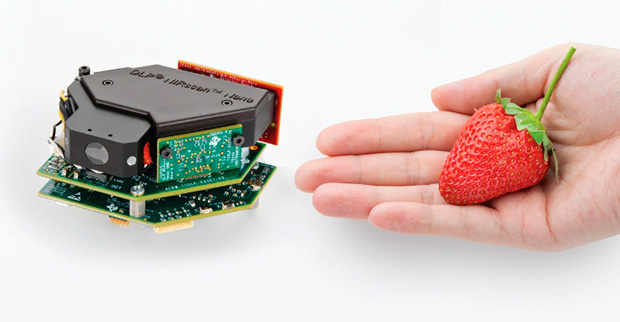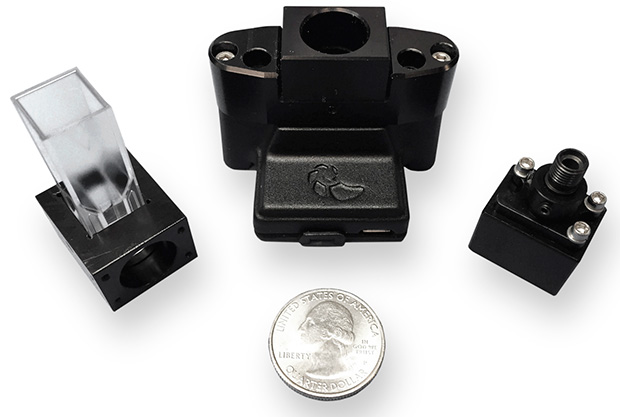NIR products at Pittcon 2015
Submitted by ianm on 10 April 2015 - 5:55pm
It certainly wasn’t a “bumper” Pittcon for new NIR spectroscopy products. However, what there were all on the small side! All are MEMS devices—micro-electro-mechanical systems—one’s that are built using techniques used to make semi-conductor computer chips etc., but which can produce devices with moving parts. Because of this construction method, they can be produced at very low cost when production volumes are high and have the advantage of being easy to manufacture reproducibly. Texas Instruments have adapted their DLP technology originally developed for projectors so that the set of programmable mirrors on the device can be used as a wavelength selection filter to pass certain wavelengths to a single-point detector. Another company with a computer chip background is Si-Wave who have built a Michelson interferometer out of silicon on a chip; complete with moving mirror and beamsplitter! B&W Tek also use a MEMS device inside their i-Spec Nano.
B&W Tek introduced the i-Spec Nano. This is a fully integrated NIR spectrometer and light source the size of a computer mouse. It covers the wavelength range 1300–2200 nm (although customisation of this is available) with a spectral resolution of 10 nm. It is powered via a USB port, although an embedded battery option is available, as is W-Fi or Bluetooth data transfer. Software is provided for qualitative and quantitative analysis. http://bwtek.com/products/i-spec-nano/

Si-Ware were showing their NeoSpectra SWS62221. This family of OEM FT-NIR spectral sensors is built using MEMS technology that produces a monolithic Michelson interferometer. Available in three different versions covering 1250–1700 nm, 1300–2100 nm and 1350–2500 nm. A standard FCPC/SMA connector provides optical connection and a mini USB port data communication and power. Evaluation kits of the sensor and software are available. www.neospectra.com

Texas Instruments continue to develop their DLP Chipset. This consists of the DLP2010NIR digital micromirror device, DLPA2005 integrated power management and DLPC150 controller, designed for hand-held NIR sensing applications using the 700–2500 nm wavelength range. The Nano evaluation module pairs with the chipset using Bluetooth and enables developers to prototype ultramobile spectrometers. http://www.ti.com/product/dlp2010nir/description

Whilst Ocean Optics’ Spark-VIS is not an NIR spectrometer (yet), it shows some interesting thinking that could have applications for the NIR world. The Spark-VIS is Ocean Optics’ first spectral device to replace diffraction gratings with a sold-state encoder. They were keen to point out the high level of similarity of each instrument and its potential for use in networks of instruments. The VIS model has a wavelength range of 380–700 nm and is available in both OEM and stand-alone versions. If a NIR version becomes available, it will be another addition to this interesting area. http://oceanoptics.com/product/spark-vis/
